After spending a few days in China‘s major northern cities like Beijing and Xi’an with its terracotta warriors, we were eager to escape the urban chaos and get some fresh air. Before our trip, I’d heard about Mount Hua, whose hiking trail is reportedly the most dangerous in the world! It’s located in Shaanxi Province, just over 120 km from Xi’an. Despite Fabienne’s apprehension, we decided to get up early for what promised to be quite an adventurous day! Get your (good) hiking boots ready for Mount Hua (Huashan)!

We hiked Mount Hua in 2013, but this article has been completely reviewed and updated in July 2025. If you notice any price changes or have additional information that might be relevant, please feel free to leave us a comment!
Introduction to Mount Hua
Considered the highest of China’s 5 sacred mountains, particularly as the great mountain of the West, Huashan has been an important site of religious pilgrimage throughout Chinese history. This mountain consists of 5 peaks: north, central, south, east, and west. The highest of the five, the south peak, rises to 2,150 meters above sea level.
Its very steep landscapes, trees growing in the middle of cliffs, ravines, and thousands of stone steps have made Mount Hua extremely popular in China. The mountain has been protected within a park for a long time now, though I’m not sure you can really call it that with the Chinese tourists – but we’ll talk about that later.
Huashan Mountain also has a reputation for being dangerous due to its steep trails in the middle of cliffs. If you Google the subject, you’ll find videos and articles that aren’t exactly confidence-inspiring!
But from experience, I know you can always find videos of the most dramatic stuff on the web. So I figured that if the mountain was accessible to everyone within a national park, the danger must be minimal…
How to get to Mount Hua
From Xi’an
In our opinion, this is the simplest option for hiking Mount Hua! Plus, it gives you the chance to visit the city of Xi’an and its cultural and gastronomic attractions ;).
- By high-speed train or bullet train: This is the fastest means of transport. From Xi’an North Station (metro lines 2, 4, or 14 and Xi’an Beizhan stop), count on 30 minutes travel time for a ticket costing around 100 yuan per person. The first trains leave around 7 a.m. and departures are spread throughout the day. Check bullet train schedules and book your tickets online. Once at Huashan North Station, free shuttles (lines 1 and 2) take you to the park gates in 20 minutes, to the visitor center. If it’s too crowded, taxis will offer their services (20-30 yuan per ride).
- For the return to Xi’an, take shuttles 1 or 2 back to the train station; the last trains leave Huashan around 10:30 p.m. Taking the first train of the day gives you time to do the complete circuit of the Mount!
- You can also go to Huashan by regular bus or train, but it takes over 2 hours! For this reason, we recommend taking the high-speed train ;).
- With a private driver: This is more expensive than taking the train but can be very interesting if you’re traveling in a group. Plus, they can leave early from Xi’an, so you can arrive first on site. Check schedules online.
- On an organized tour: By opting for this excursion, in addition to private transport from Xi’an, you’ll be accompanied by an English-speaking guide for the day. However, cable car tickets are not included in the price.
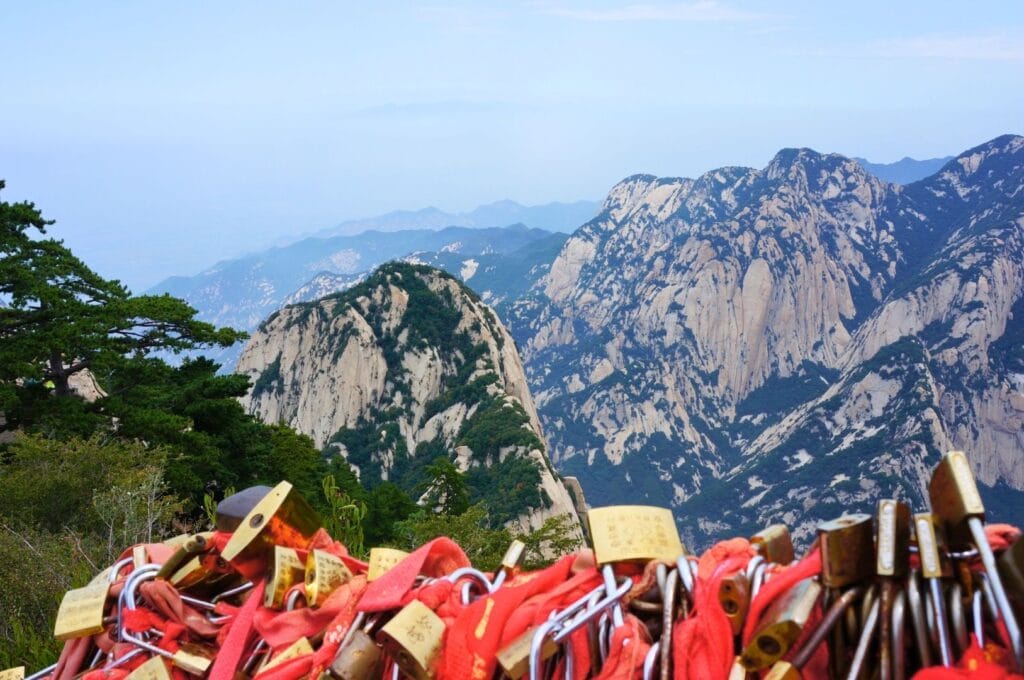
From Chengdu
From Chengdu, the train is the best means of transport to get to the foot of Mount Hua. Count on about 400 yuan for a 4.5-5 hour journey in second class. Check schedules and book your tickets on this page.
From Beijing
From China’s capital, the train is also a safe bet! By rail, tickets cost about 600 yuan for a 5-hour journey. Find schedules and different tickets online.
By plane, it’s not really worth it in our opinion. You’ll spend the same time door-to-door between Beijing and Huashan via Xi’an (the airport closest to Mount Huashan) as taking the train to arrive directly at Huashan. Flight tickets start at 700 yuan.

Where to stay at Mount Hua
Hotels
We slept in a hostel in Xi’an, getting up early and going to bed late to do the circuit in one day. But it’s possible to sleep at the top of one of the 5 mountain peaks in the evening (except the south summit), but places are limited, comfort is quite spartan, and prices explode! Indeed, one of the park’s attractions is watching the sunrise from the summit, particularly from the east peak (the East Peak Hotel is perfect for this). Count on about $200 for a double room and $25 for a dorm bed…
Otherwise, you can sleep in Huayin, the town located right at the foot of the mountain range. The choice of accommodations is greater and you can still catch the sunrise by leaving early ;). Since the Mount Hua circuit can be done in one or two days, sleeping on site for one or two nights is also a good option to discover Huashan at your own pace, especially if you plan to do everything on foot.
Camping
Do you have your camping gear? Then pitch your tent at the top of one of the peaks for a unique experience!

This article contains affiliate links to partner sites. When you use our links to book accommodation, a car, or an activity, you don’t pay anything extra, but we get a small commission. This helps us to offer you free, independent, and ad-free content. Thank you for your support!
Hiking Mount Huashan
Trail map
To help you navigate, here’s the map of Mount Hua’s 5 peaks with attractions noted and the trail that goes around – this is the itinerary we followed.
The routes
Mount Hua’s 5 peaks are all connected by hiking trails, and to help you navigate, here are the different itineraries depending on what you want to do. Note that 2 cable cars take you directly to the north and south peaks – they’re indicated on the map above.
The complete Huashan circuit
On foot only
- 13.2 km
- 8.5 hours
- 1500 m positive elevation gain
It is in red on the map:
Ascent to north peak from Yuquan Temple (shuttles depart from the visitor center to the trail start, 10-minute ride) → central peak → east peak → south peak → west peak → return to north peak to begin descent via the standard path.
Note: Once at the central peak, at the loop junction, the direction doesn’t matter.
Doing the complete circuit only with the power of your legs is possible but reserved for the most athletic! To simplify this long hike, you can always take the available cable cars. The complete circuit entirely on foot takes a good 8.5 hours. If this adventure tempts you, we recommend starting as early as possible!
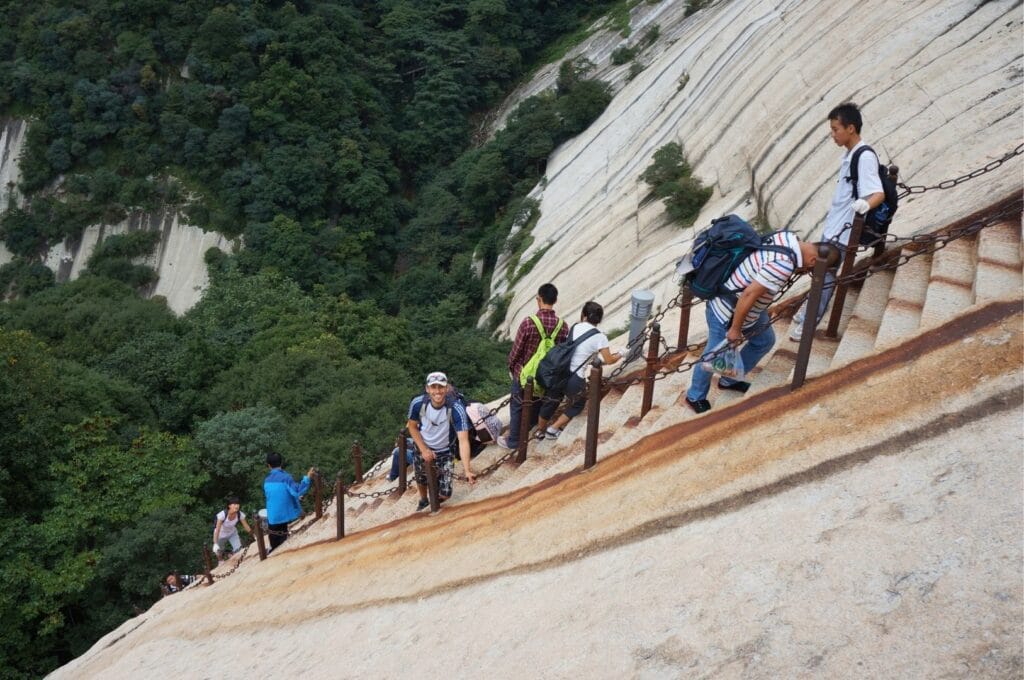
On foot and by cable car
- 4.3 km
- 4-5 hours
- 730 m positive elevation gain
The compromise is to start from Yuquan Temple, climb to the north peak, pass through the central, east, and south peaks, and finish at the west peak, where you can take the cable car down instead of walking.
Last solution: take the cable car to the north peak, then go through the central, east, and south peaks to reach the west peak. Then descend using the west cable car. If your physical condition isn’t optimal, we advise doing the circuit in the other direction, starting from the west peak and returning to the north peak using the 2 cable cars. In the counterclockwise direction, the trail is generally descending. Count on 4-5 hours for the peak hike and a total visit time of 5-6 hours.
The easiest itinerary: west peak (cableway) → south peak → east peak → central peak → north peak (cableway).
To reach the 2 cableways, shuttles run back and forth from the visitor center. There’s a fee: 20 yuan to reach the north cable car (about 20 minutes) and 40 yuan to reach the west cable car (about 40 minutes). Then you’ll need to reach for your wallet again to reach the summits! A one-way ticket costs 80 yuan for the north peak (10-minute ride) and 140 yuan for the west peak (20-minute ride). For schedules, the cabins are accessible from 7 a.m. to 7 p.m. (high season, March 1 to October 30) and from 8 a.m. to 5 p.m. (the rest of the year).
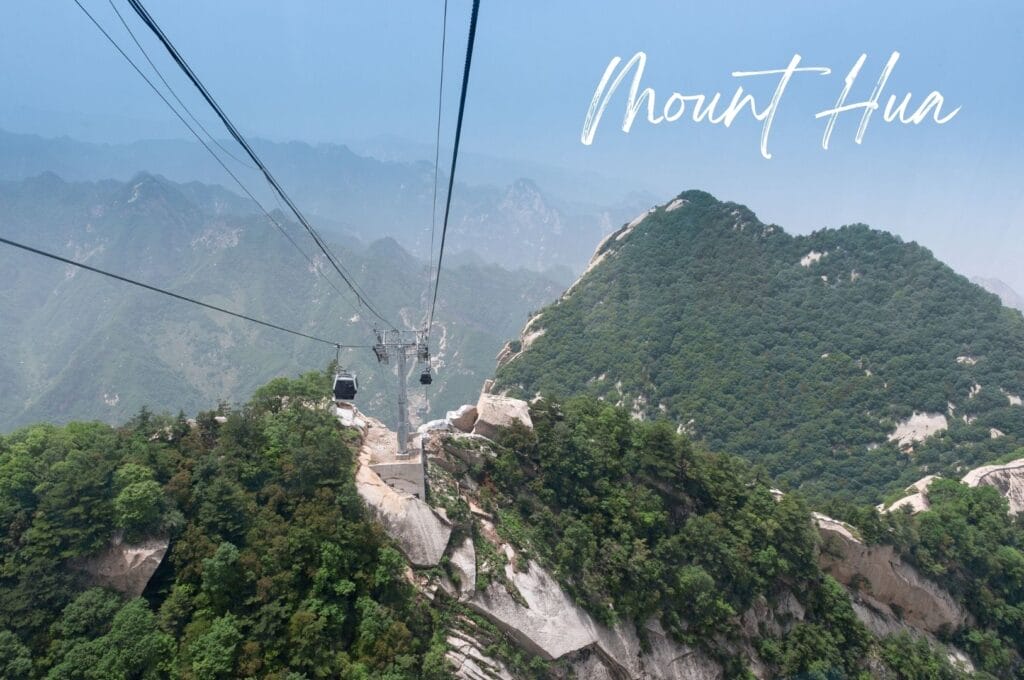
Partial circuit
If time is limited or you have physical difficulties, doing part of this loop is a good option. We’ve detailed each section in the following part to help you choose. In our opinion, it would be worth:
- Taking cable cars to the north and west peaks and enjoying the view without much walking;
- Climbing on foot to the north peak to get an overview of all the summits and descending by cable car;
- Taking the north cable car, walking to the east peak, turning around to return to the north peak and descending by cable car;
- Going up with the west cable car, doing the loop without going through the north peak and descending by cable car at the west peak;
- etc.
In short, the possibilities are numerous! You’ll surely find the combination that suits you using the following information about each part of this great loop.
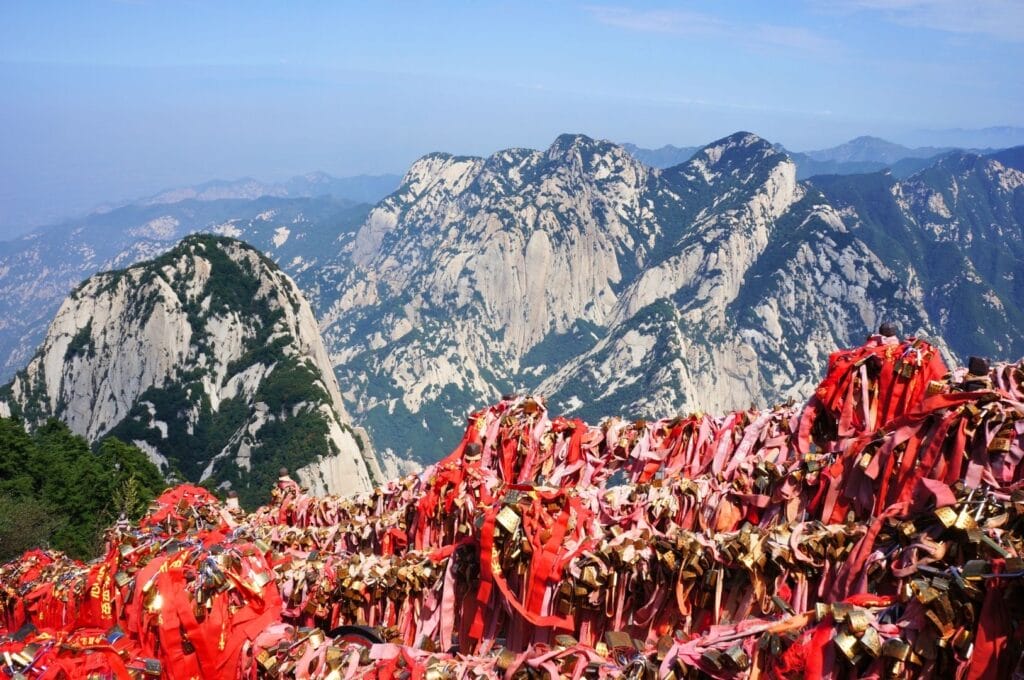
The complete Mount Hua circuit on foot
Ascending the north peak
3 possibilities
To reach the north peak (the lowest of the 5 peaks at 1,615 m altitude) from the foot of the mountains, you have 3 possibilities:
- The standard path: It’s about 6 km for 1,500 m positive elevation gain. The path climbs gently for the first 4 km to finish with 2 km of stairs, including the passage of the thousand-foot cliff, a beautiful slope over 70° inclination! Allow 3 to 4 hours to climb this way. It starts from Yuquan Temple, and to get there, once you’ve bought your ticket at the visitor center, free shuttles drop hikers at the village.
- The soldiers’ path: This 2.6 km trail climbs quite brutally and consists simply of stairs carved into the rock. Allow 2 to 3 hours to climb this trail, which features 4,000 steps! We strongly recommend taking a shuttle to avoid the 7 km to the trail start. The road is narrow and it saves you energy for the rest of the day – you’ll need it!
- The cable car: It costs an arm and a leg (220 yuan round trip, plus entrance fees, that’s a lot…) and we had already eliminated it before leaving, but it’s the solution chosen by the majority of tourists. Since the cabins are located 7 km from the center, you must take the shuttle. We’ve indicated all the information in the box above.

The soldiers’ path
- 2.6 km
- 3-4 hours
- 850 m positive elevation gain
After lightening ourselves of the entrance fees, we take the minibus that brings us to the foot of the mountain. We planned to go up via the soldiers’ path and come down via the standard path. We figured we’d see what we had time to do once at the north peak, since access to the other higher peaks automatically goes through there.
So, the soldiers’ path is no walk in the park! It’s composed from A to Z of 4,000 stair steps with places that have up to 80 degrees of slope! But as I thought, every time a difficult section appears, an alternative route has been built. This route is there for people who might have vertigo or just don’t want to take unnecessary risks.

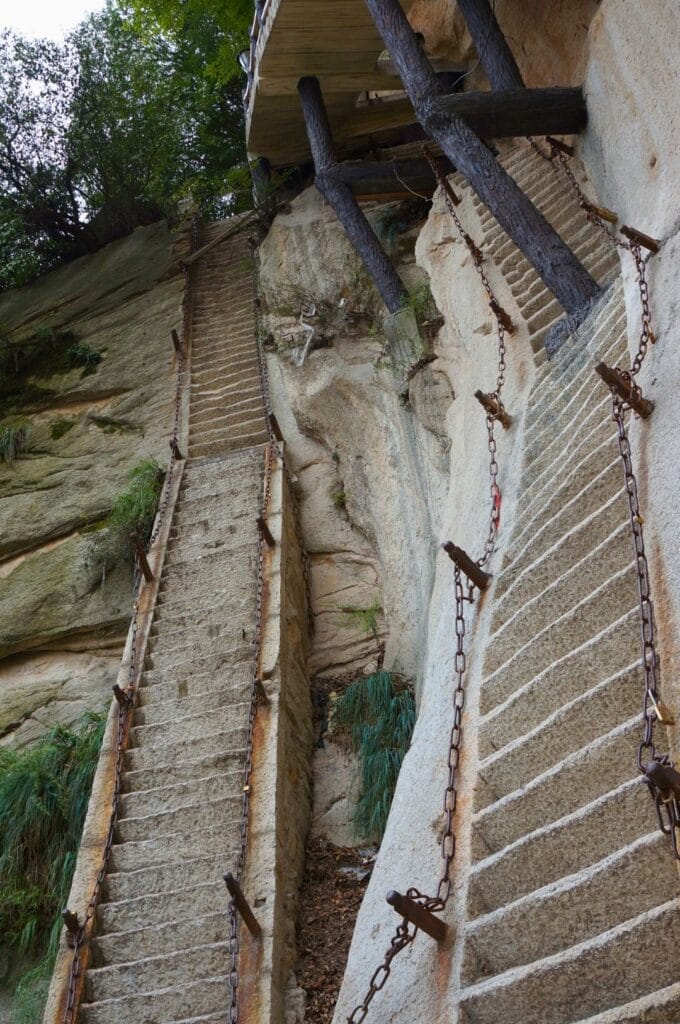
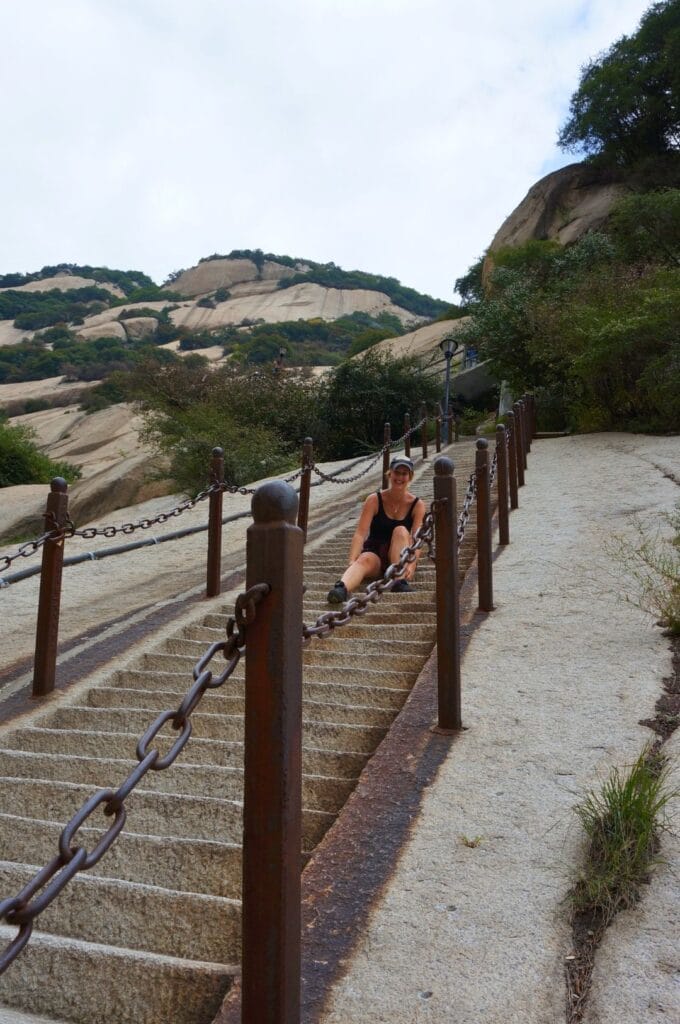
As for us, we tested one or two steep sections to get the adrenaline pumping a bit. But if you follow the alternative routes, the path is practically risk-free throughout. And it’s not because we’re Swiss that we’re saying this. I’d say you just need to have good physical condition to handle the many steps ;). On the other hand, the landscapes that emerge as you climb compensate for the energy expenditure… At the summit, the view of the other peaks is splendid!
From north peak to central peak
- 1 km
- 1.5 hour
- 400 m positive elevation gain
Once at the north peak, you can embark on ascending the other peaks. Since most people start the walk at this point, given that’s where the cabin arrives, I’d say the trails and stair steps are a bit wider from this point on.
We first follow the Black Dragon Ridge while admiring the spectacular panorama before us. The Black Dragon Ridge is a very narrow trail whose steep steps have been carved directly into the mountain ridge. Here, you can also take an alternative stairway that’s easier! We then arrive at the Golden Lock Pass, where tourists hang a golden padlock and a red ribbon. A bit like Paris!
At the trail junction, at the central peak, you choose which summit to head toward (east or west).

From central peak to east peak
- 400 m
- 20 minutes
- 80 m negative elevation gain
In this section is the Sky Ladder, a vertical wall to climb using small steps and chains. Here, no harness is offered, but don’t worry, you can take the “normal” stairway right next to it ;).
From east peak to south peak
- 900 m
- 1 hour
- 185 m positive elevation gain
If you feel up to it, visit the Chess Pavilion at the end of the Hawk Flipping Over path. This path is optional – it’s a small round trip from the east peak. The slope is so steep that a harness is necessary to reach the structure that overlooks the cliff. And if, by pure chance, you’re carrying chess pieces with you (!), then you could play a game on the little stone table provided for this purpose. Surely one of the craziest settings for a chess match! This is actually where emperors have played chess. Note: Hawk Flipping Over is accessible to people aged between 15 and 55 and measuring over 1.5 meters.
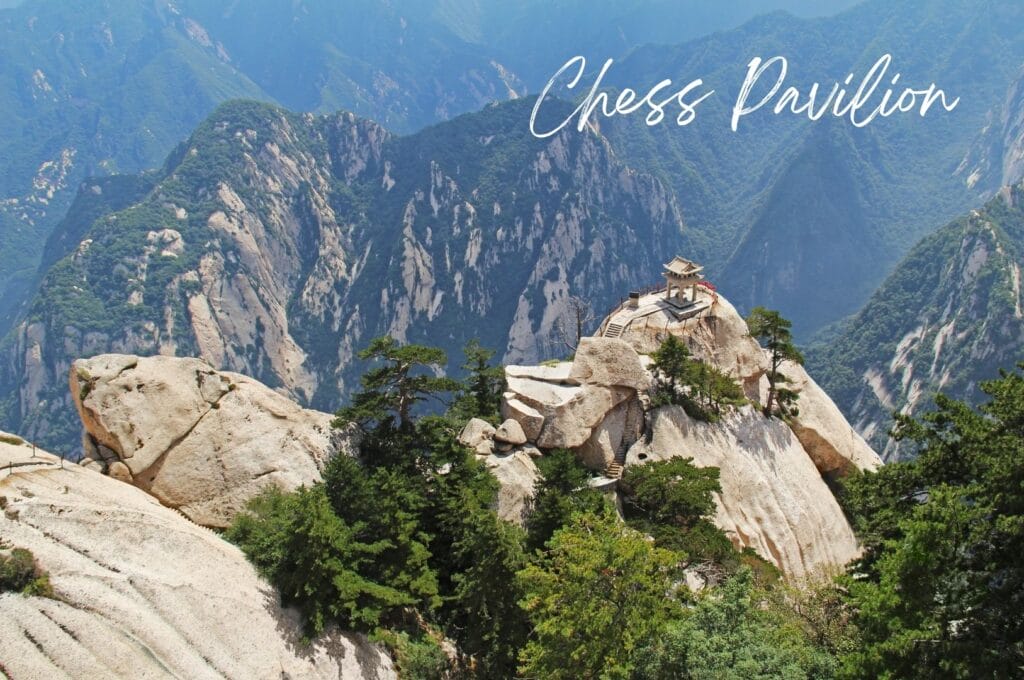
Before reaching the south peak, will you try Mount Hua’s most dangerous trail? The Cliffside Plank Path (Plank Walk or Plank Road in the sky on the maps) starts from the Heavenly South Gate for 100 meters, which will undoubtedly be very trying if you’re afraid of heights! In fact, it’s a bit like a via ferrata, with 2,000 meters of void below you! This is the passage you see in the video at the beginning of the article. Honestly, we preferred to skip it!
You also must rent a harness (30 yuan) to move on steps carved into the rock itself (it’s very steep) and a path made of wooden planks on the cliff face. However, as you see on the map, you’ll need to turn back to continue the Mount Huashan circuit. This means crossing over other visitors on a plank 40 cm wide. Gulp!
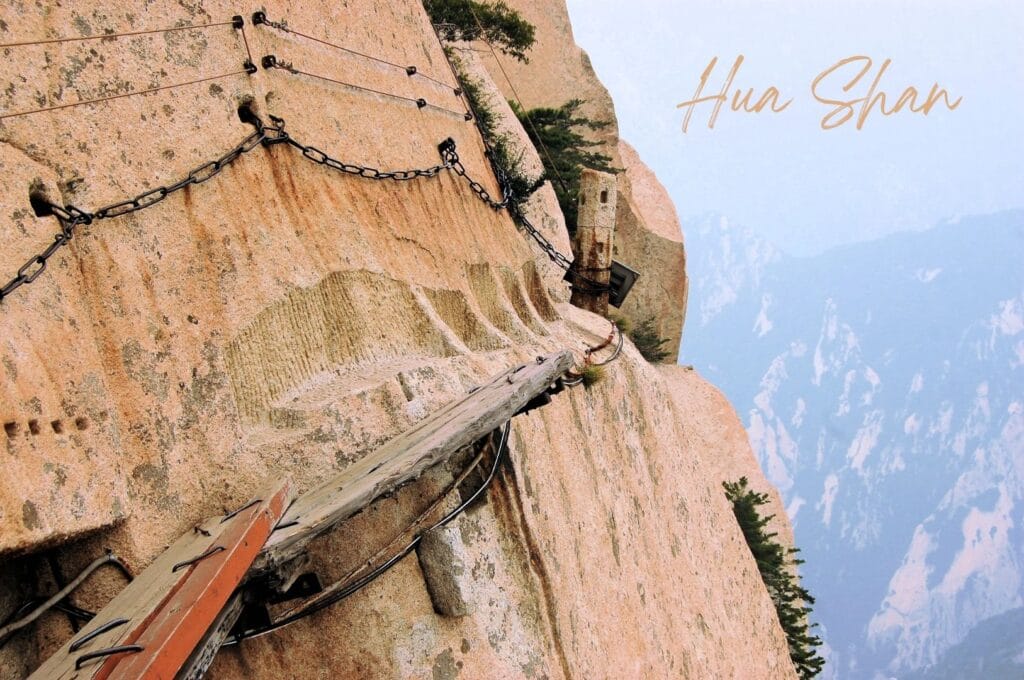
Note: Only people aged between 15 and 55 and measuring over 1.6 meters are allowed to take this path. You must be accompanied by at least one person to venture there. Also, prepare to wait a good while, sometimes 1 hour or more! To arrive before the crowds, you need to take the west cable car.
From south peak to west peak
- 600 m
- 30 minutes
- 90 m negative elevation gain
I particularly loved the view from the south peak, which is the highest, even though along the trails you’ll find equally spectacular viewpoints. After passing through Mount Hua’s highest point, you’ll pass by the Alchemy Furnace, a furnace dedicated to alchemy to recall the original built under the Ming Dynasty. In autumn, the place takes on lovely red hues thanks to the maple leaves!
Finally, at the gates of the west peak and its cable car, you’ll arrive at Cuiyun Palace, a Taoist temple surrounded by enormous rocks that you can climb thanks to steep but “secured” stairs with chains.
Note: The west peak is very popular for its sunset view. If you can, stay to watch the show!

Descent from west peak
- 2 km to north peak + 6 km
- 1 hour to north + 2.5 hours
- 600 m de negative elevation gain + 1,500 m negative elevation gain
If you want to finish the hike at the west peak, take a cable car, then the shuttle that will take you to the visitor center. Another will make the trip to the station.
To descend on foot, you’ll need to take the section between the west peak and the north peak, passing through the central. This section is less interesting – not much in terms of views or temples, but 3,000 steps! Once at the north peak, I advise against descending via the soldiers’ path. Since the stairs are relatively steep in certain places, I’d say this passage is easier going up than down, facing the void! Go down via the standard path instead, which is doable in 2.5 hours in this direction. Plus, on this route, you’ll cross a beautiful valley as well as well-preserved temples… This is the option we chose :).
Practical information before you go
Dangers
The 2 most dangerous passages in the area are Cliffside Plank Path and Hawk Flipping Over. Since they’re optional, you can skip them without problem. For the Black Dragon Ridge, a slightly more delicate passage, take the alternative path next to it if it’s too steep for you.

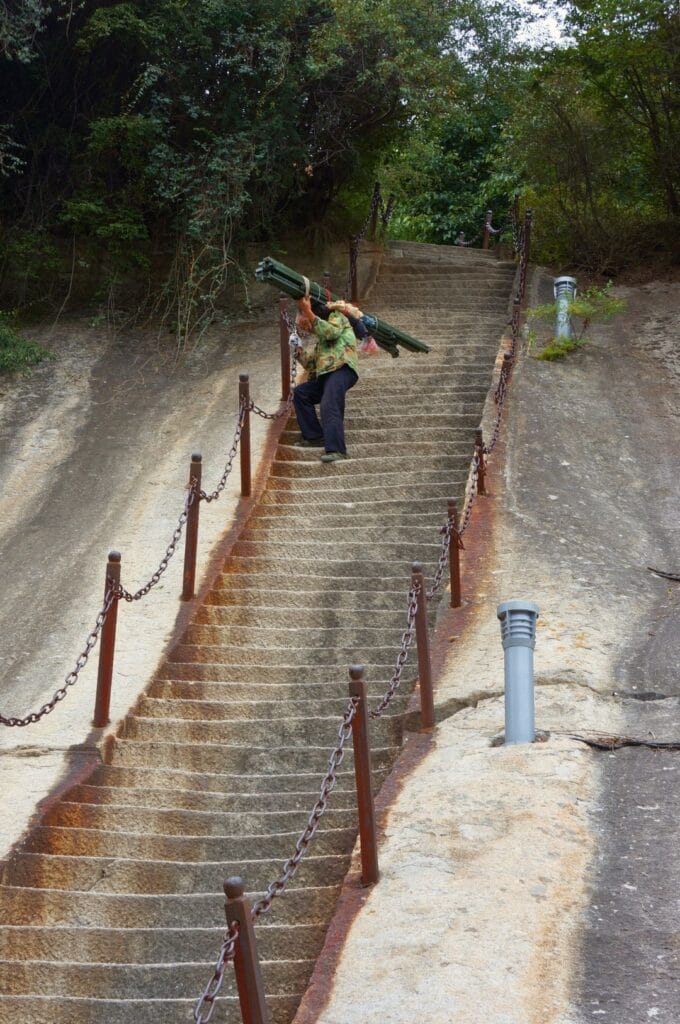

Otherwise, on the rest of the trails, I’d say the danger is mainly present during days of heavy crowds. It indeed becomes difficult to pass each other in certain places if there are many people. And since the Chinese don’t hesitate to push, I can believe that an accident is possible! Plus, since the average Chinese tourist comes to walk here in loafers, I imagine a slip is quickly possible! We’ll talk about this more below.
The best season for hiking Mount Hua
Avoid weekends in July and August, as well as the first week of October (national holidays or Golden Week) if you want peace on the trails ;). Also, you’ll avoid the stifling summer heat. The ideal is to come in spring, between March and June, or in autumn, from September to November, when the trees are adorned with magnificent flamboyant colors! The earlier you arrive in the day, the more peaceful it will be ;).
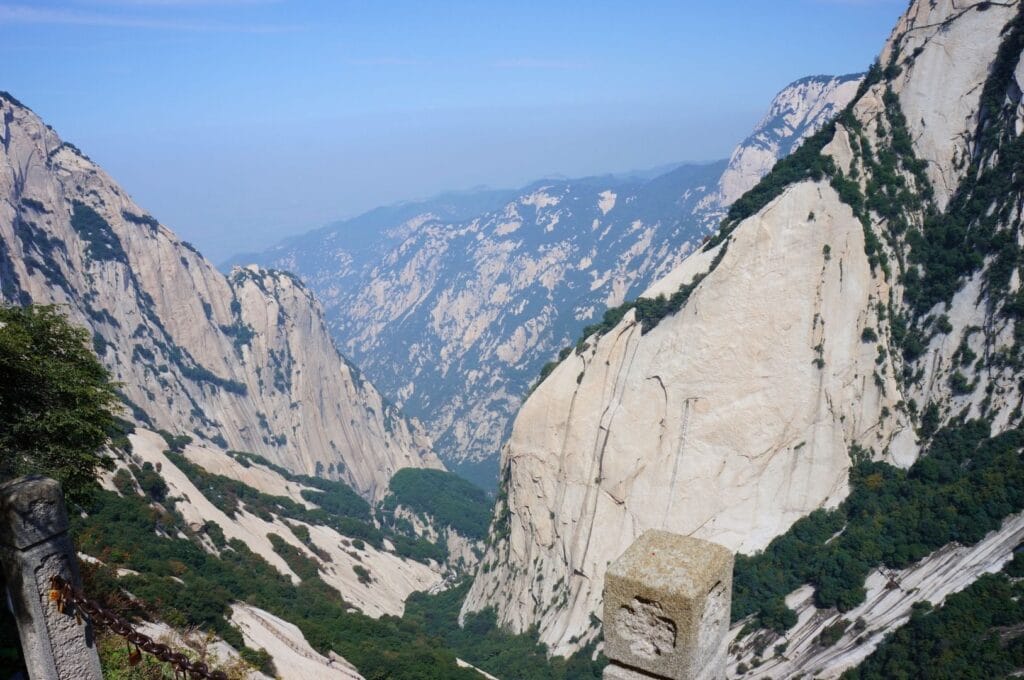
Park entrance prices
Count on 160 yuan per person and 220 yuan extra if you want to take the cable car. Tickets to enter are bought at the visitor center, as are shuttle tickets. However, cable car tickets are bought directly at the stations.
Food at Mount Huashan
We advise having enough food and drink because prices are really excessive along the trails or in the different restaurants.
Useful equipment
Plan on good hiking shoes! Don’t do like the Chinese who do this in loafers or high heels ;). Hiking poles are also welcome, as are thin gloves for a better grip on the chains. If you don’t have these, you’ll find them at the stands.
Bonus
If you have time, visit the Xiyue Temple in Huayin, one of the oldest Taoist temples in the area.
Rant against Chinese tourists
Pollution
During this day, I was scandalized by the behavior of Chinese tourists. And this time, it largely exceeded the framework of subway shoving in Beijing or spitting in the streets. We were in a natural park and the first thing that shocked me was that they simply threw their trash on the ground, as if it were normal.
I had obviously already seen this at home, but not in such proportions. Here, it was PET bottles, cookie wrappers, and others that got this treatment, even though trash cans were all along the path. I even saw people throwing bottles into the void from the south peak for a reason that escapes me. We imagine they wanted to calculate the height of the cliff?! I don’t know what stopped me from pushing one of them down to make the same calculation!
What’s certain is that they haven’t yet had an ecological awakening and there’s still a lot of ground to cover before they worry about this kind of “detail.” It seems they think it’s part of the service, given that there’s an entrance fee. They must get their money’s worth! It’s typical of the Chinese mentality, I find.
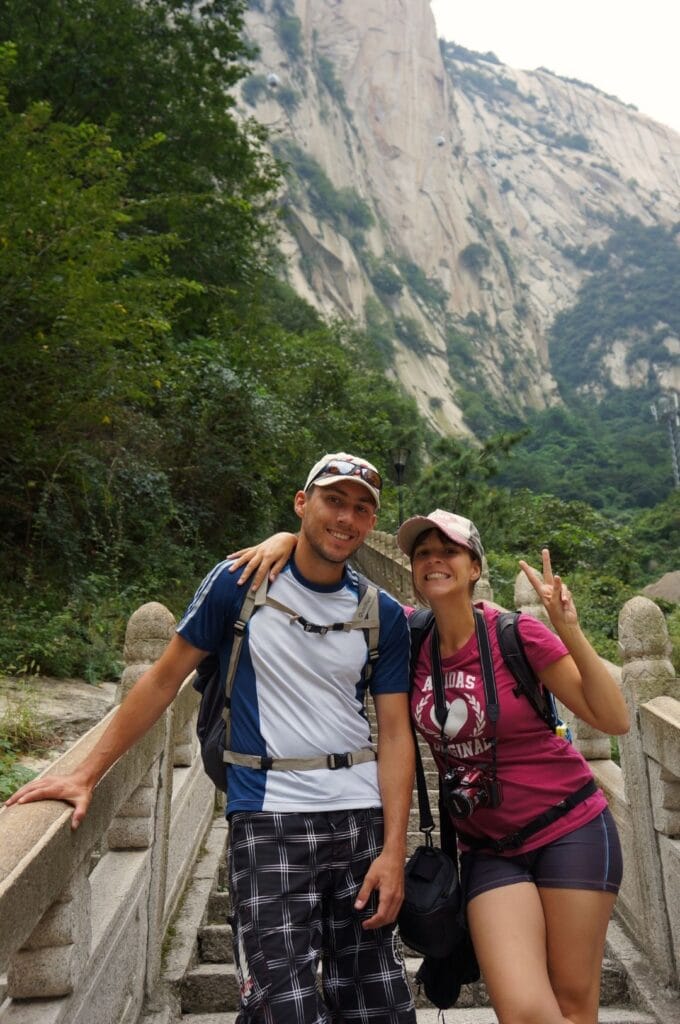
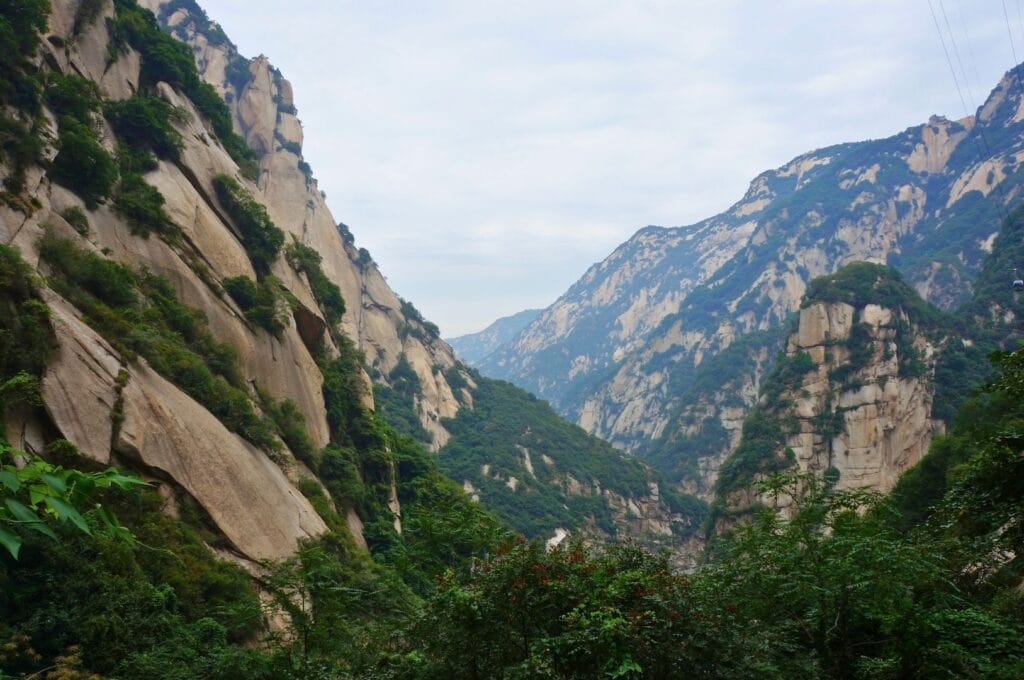
Equipment
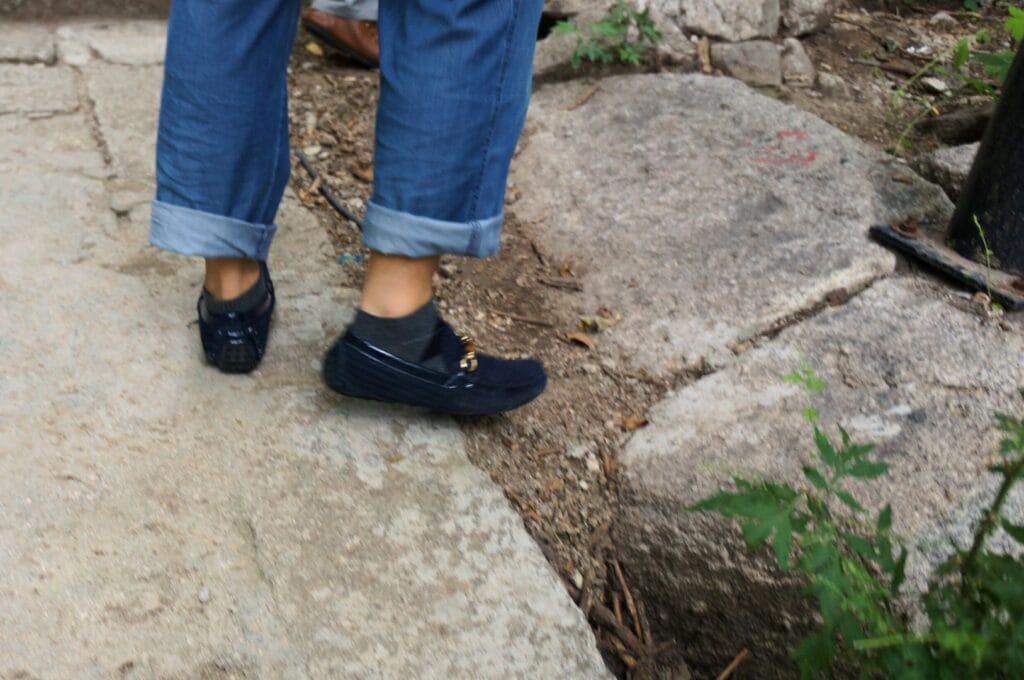
The second thing that drove me crazy is that even though we’re in the mountains, they behave like in the city. People push and shout, it becomes very unpleasant. Well, yes, we go to the mountains to be a bit peaceful, in general. The behavior is stupid and sometimes even dangerous in certain places.
Plus, I saw numerous people walking around in city shoes and even heels (yes, yes!!). Even if no mountain equipment is necessary on the main trail, it’s a simple matter of common sense to wear at least sneakers or hiking shoes that don’t slip too much. You surprise me that they report accidents with such behavior…

If you’re traveling to China and want to access your social media accounts like Facebook, Instagram, or Pinterest, know that these sites are blocked. You’ll need to use a VPN. For those who don’t know what this is, here’s a little article about VPNs. We’ve had a subscription with ExpressVPN for several years and are delighted with it.
To summarize, we found it was a beautiful walk with very beautiful landscapes. And despite the behavior of Chinese tourists, it didn’t spoil our pleasure ;). You could say that Mount Hua was a good warm-up for climbing the 60,000 steps of Mount Emei!
And you, have you already walked in natural parks in China? How did you find the behavior of Chinese tourists? For the rest of the trip, we’re taking you to meet the pandas of Chengdu!
P-S: Find our complete guide to prepare your trip to China with all our practical tips for visiting the country and our advice for building your itinerary.
Pin it
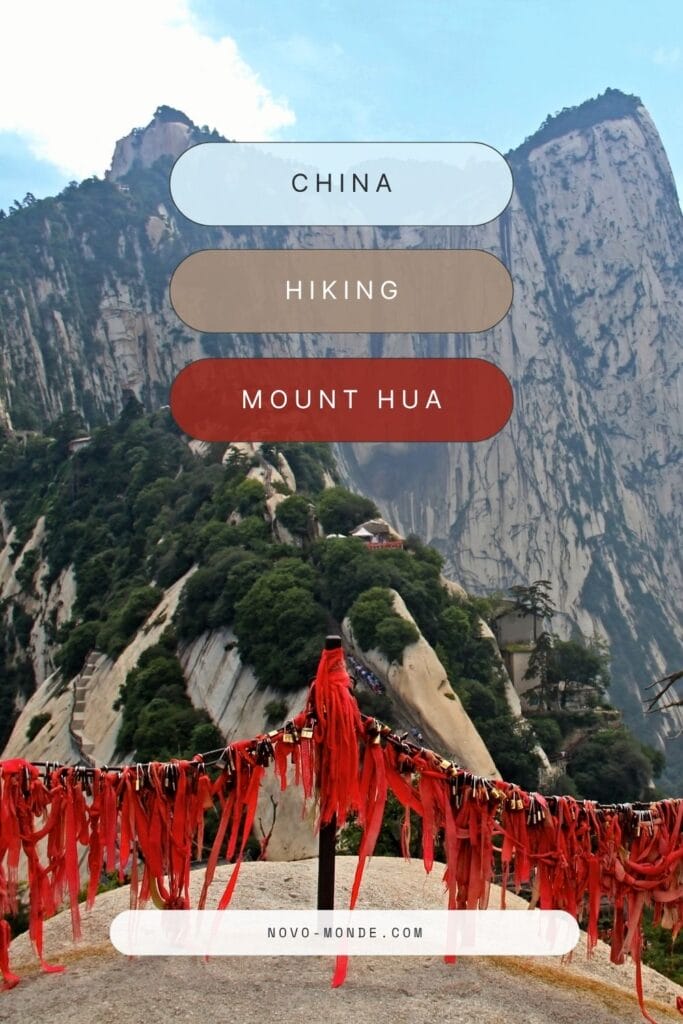
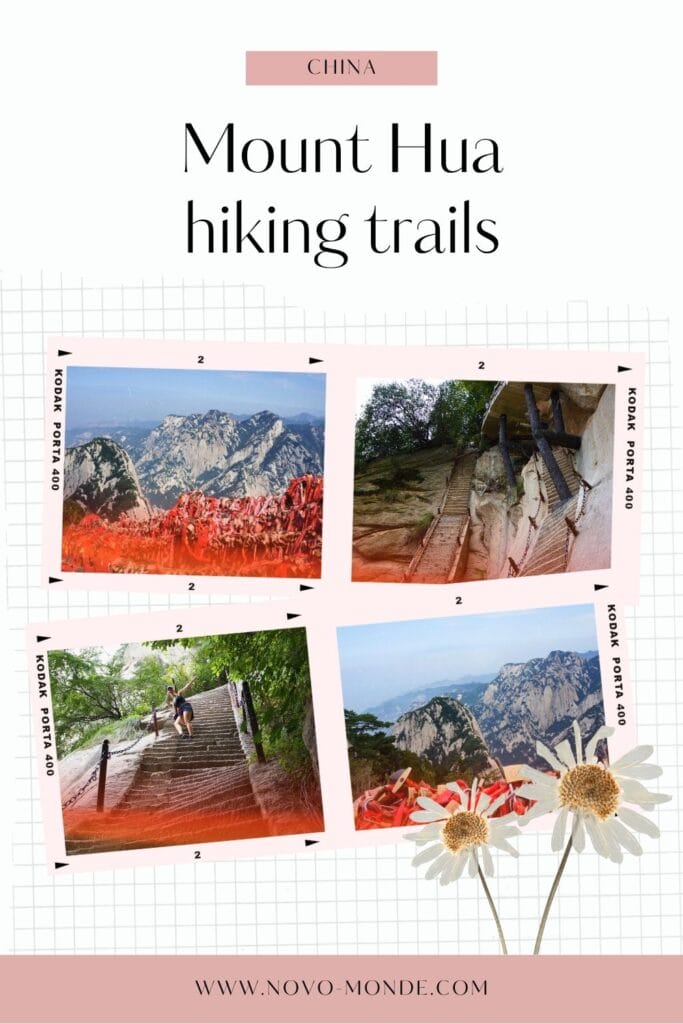
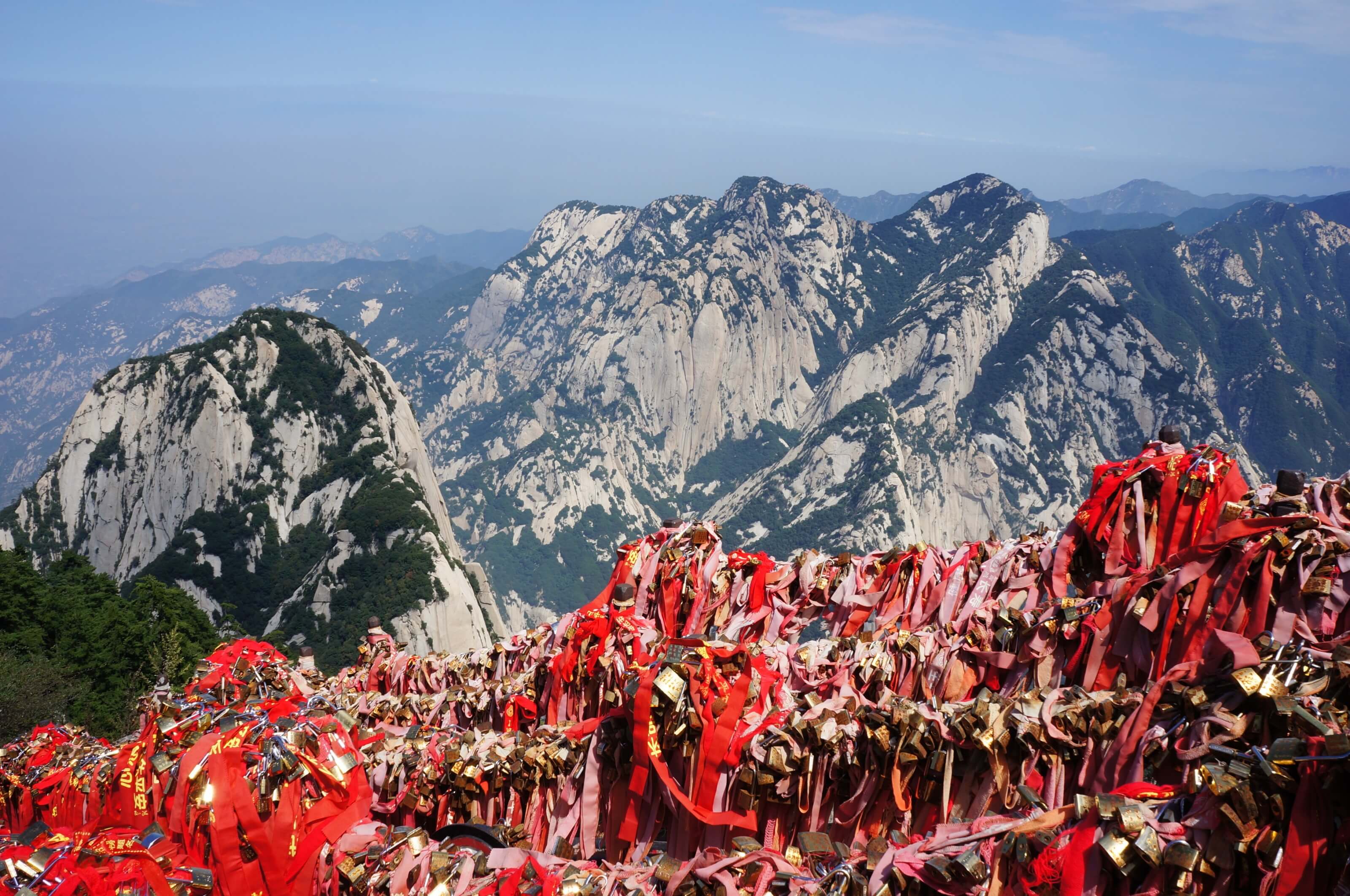
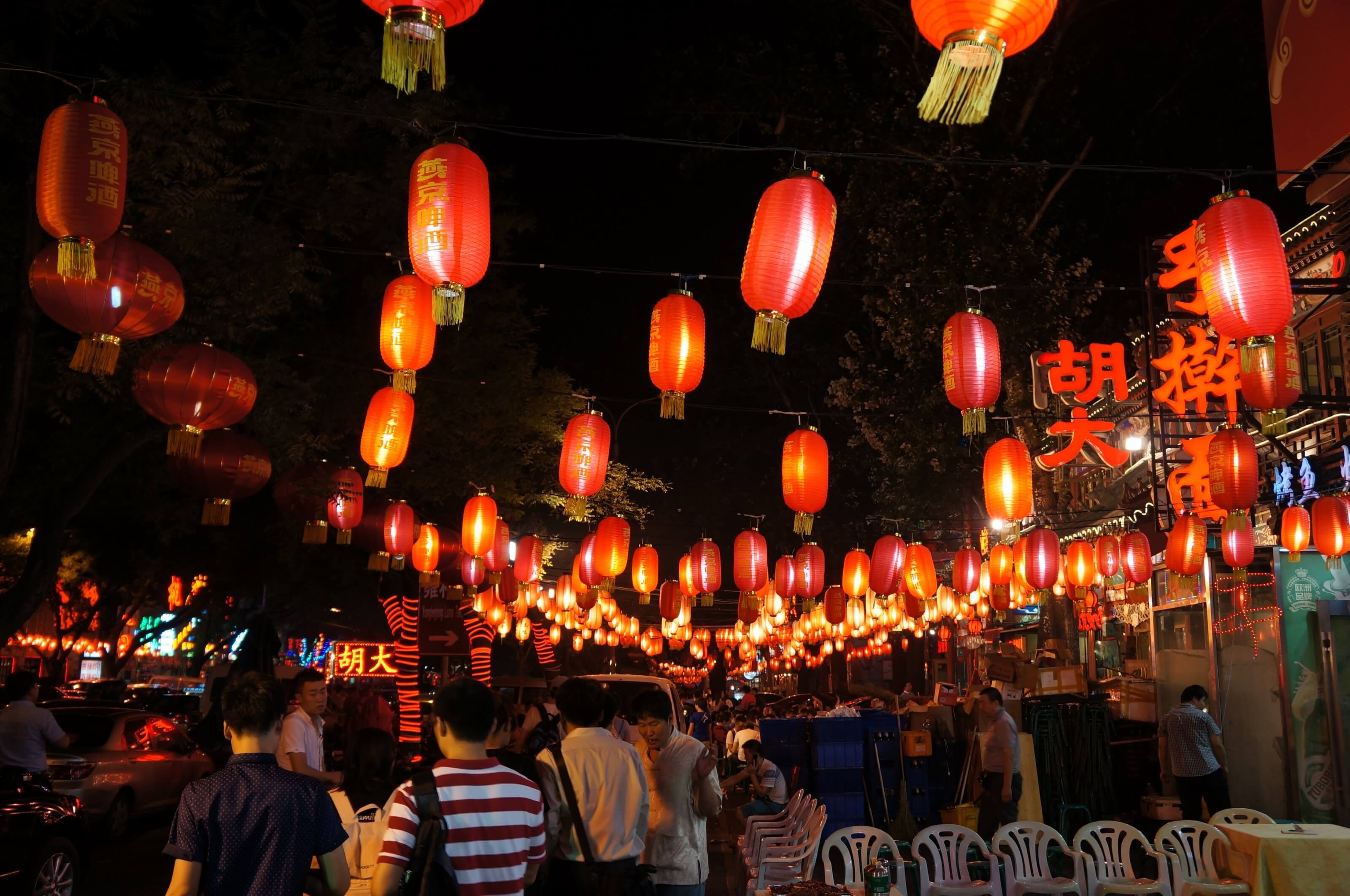
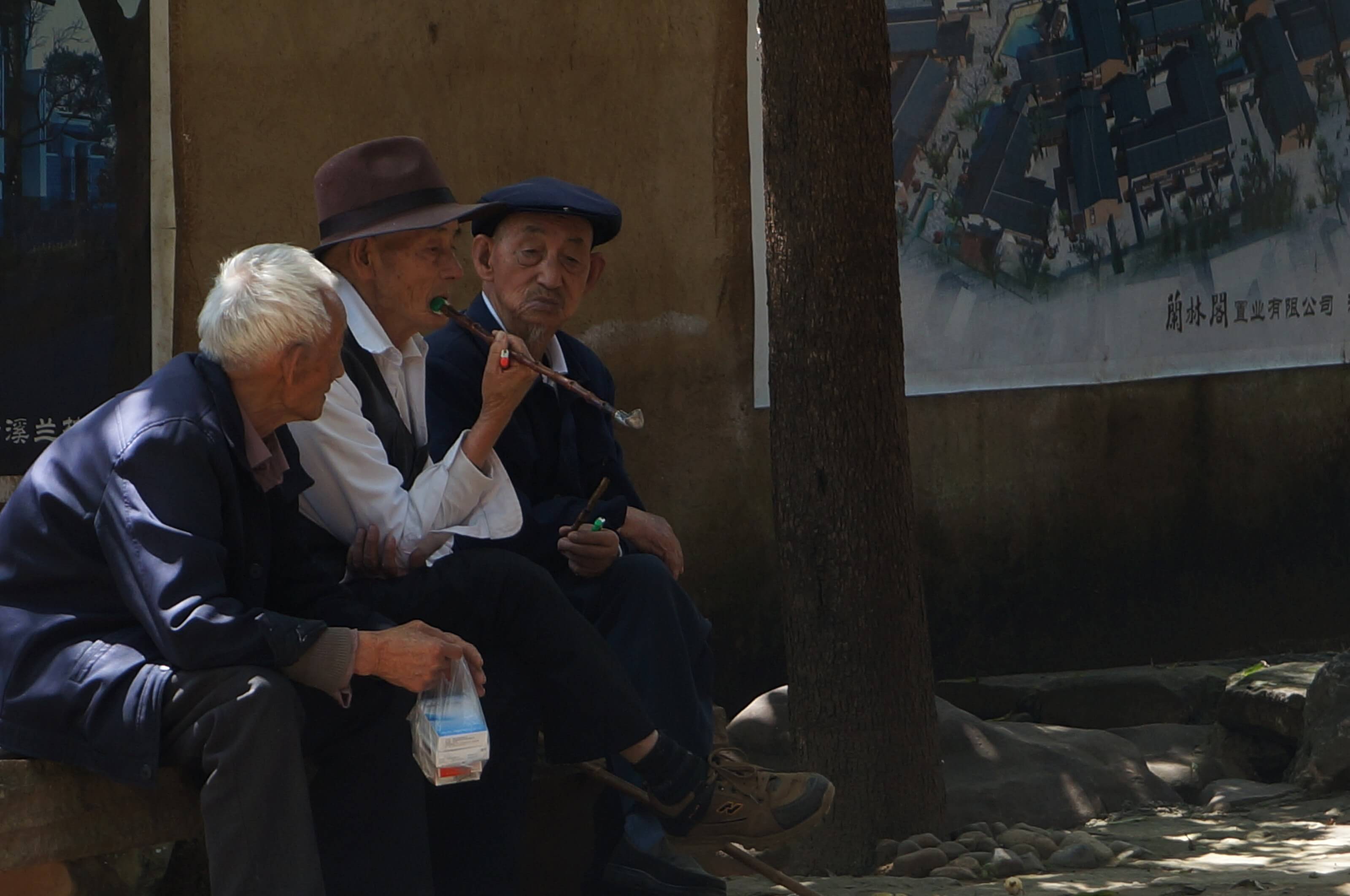
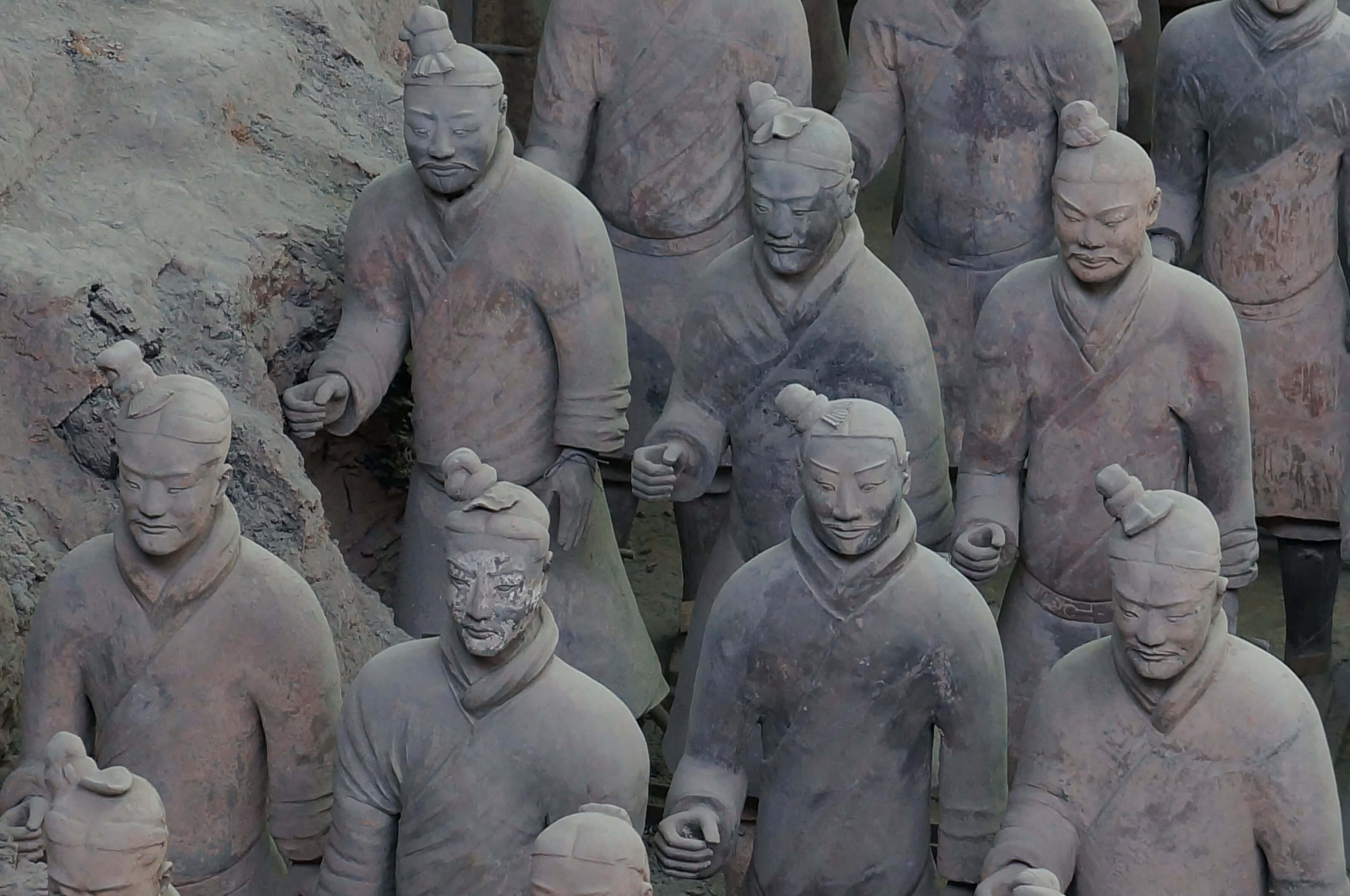

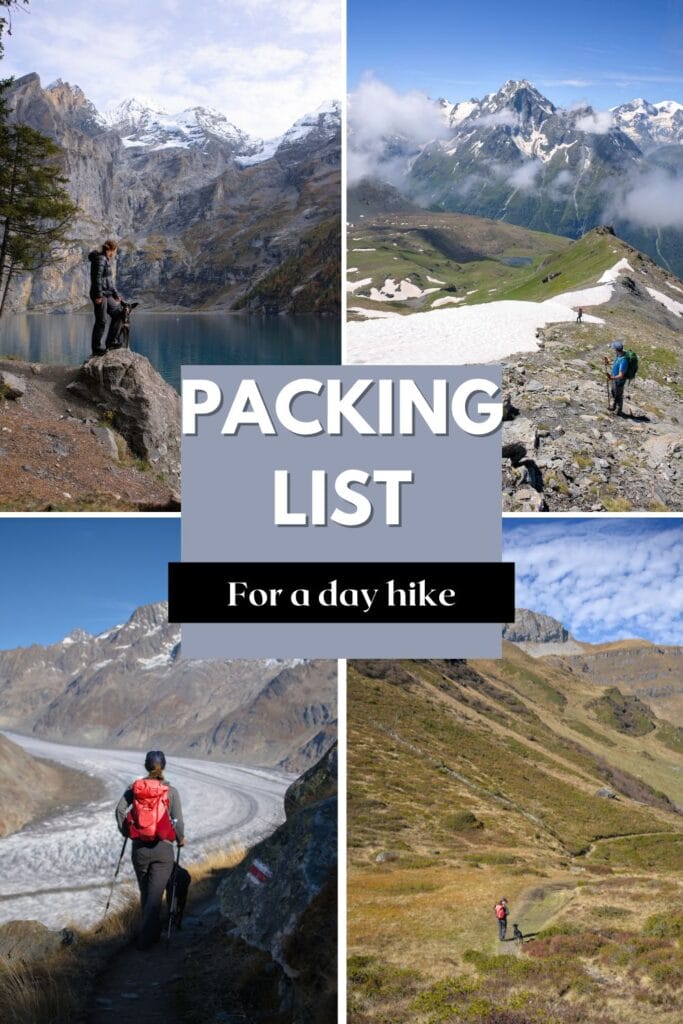
Hi i just wanna ask can the foreigner enter the place because ive heard that the foreigner cannot enter the place.
Hi Reen,
I haven’t heard about any restrictions to go to Hua shan for foreigners (well except because of the Covid situation of course)